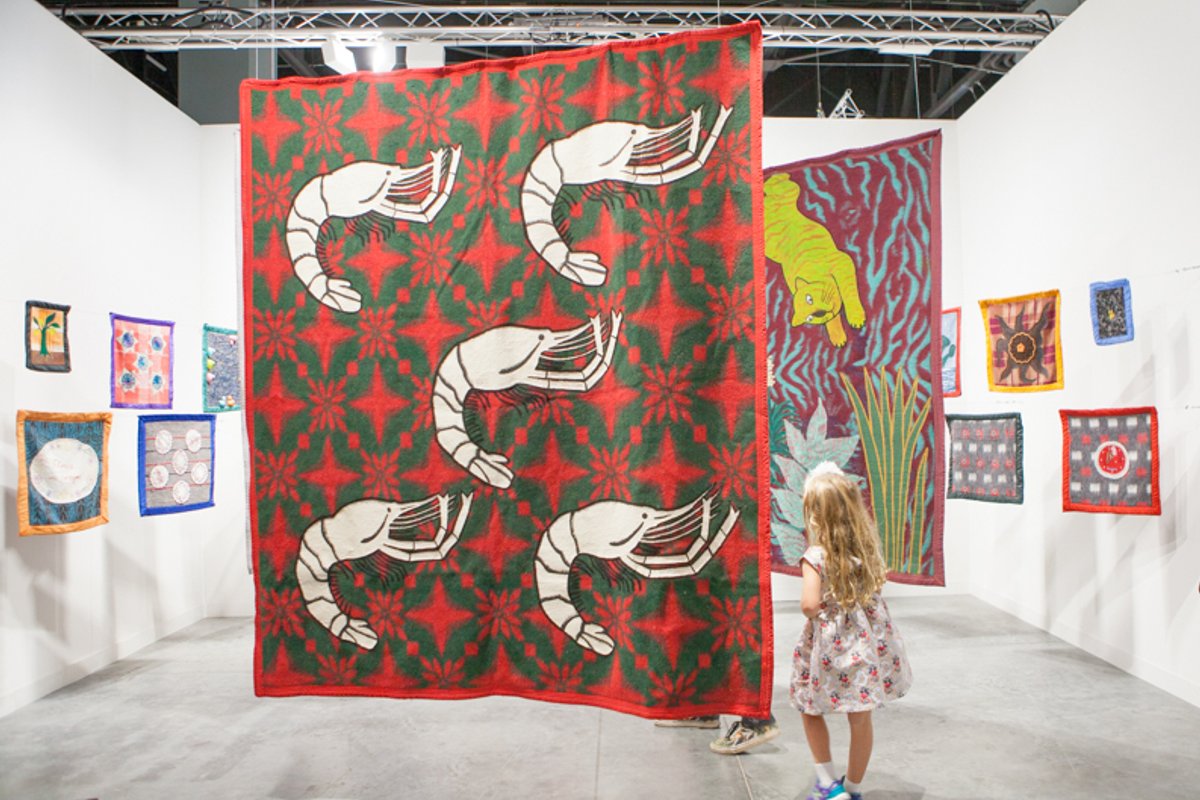Late artists written out of art history are being reassessed at the fair, with galleries shining a light on lesser-known international figures, boosting their critical and commercial profiles. “It is not just about the market, but also about filling in the gaps from an art-historical point of view,” says Liza Essers, the director and owner of the Johannesburg- and Cape Town-based Goodman Gallery.
Taking centre stage at Walden Gallery in the fair’s Survey section is the Paraguayan artist Feliciano Centurión, who died in 1996, aged 34, from an Aids-related illness. His embroideries, including blankets and handkerchiefs decorated with phrases such as “Estoy despierto” (I am awake), address topics such as his sexuality and imminent death (prices range from $22,000 to $110,000).
“He was undervalued, but institutions and collectors are showing much more interest now,” says Walden’s Agustina Taruschio. Earlier this year, the Venezuelan collector Patricia Phelps de Cisneros donated works including Centurión’s blanket Medusas (1994) to the Museo Reina Sofía in Madrid. Taruschio says the gallery spent five years gathering works to bring to Miami by “working with some of his closest friends”. His estate is represented by the London-based dealer Cecilia Brunson.
Alison Jacques Gallery represents the estates of two female artists whom the London-based dealer believes have been overlooked: the Czech-born sculptor Maria Bartuszová, who died in 1996, aged 60, and the US fibre artist Lenore Tawney, who died in 2007, aged 100.
Relatively forgotten artists can be exciting rediscoveries; this is a way for galleries to work with estates and introduce artists with track records to new collectorsArianne Piper
“US audiences are less familiar with Bartuszová’s work, although the Tate has acquired seven of her sculptures. Her prices have risen, and justifiably so, but they are still behind those of her male contemporaries,” Jacques says. She is showing sculptures by Bartuszová (priced at $75,000 to $250,000) and collages by Tawney ($35,000-$120,000).
Other dealers are fostering close relationships with artists’ estates and their heirs. Hirschl & Adler of New York is presenting work by the German-American artist Winold Reiss (1886-1953) in the fair’s Kabinett section. “His legacy might have been forgotten were it not for the efforts of his daughter-in-law,” says Thomas Parker, the gallery’s associate director. “Reiss is not widely known, but he is remembered for his role in the Harlem Renaissance.” Pieces include his Cubist-style work on paper Untitled (1925-30; $60,000).
The question of who benefits from these discoveries is, however, open to debate. Dealers are keen to show this work to scholars and curators, but exhibiting at Art Basel in Miami Beach, which is primarily a commercial platform, will no doubt boost the market value of rediscovered practitioners.
The London-based art adviser Arianne Piper says that galleries are striving to promote artists who have not received “deserved recognition”, noting the recent announcement by Victoria Miro that it is to co-represent the estate of the Belgian painter Ilse D’Hollander (1968-97).
“Relatively forgotten artists can be exciting rediscoveries; this is a way for galleries to work with estates and introduce artists with track records to new collectors,” Piper says. A market commentator who preferred to remain anonymous says: “These may be better arrangements, as their prices have not yet gone through the roof and can still rise.”
Commercial considerations aside, fairs are an important part of the research process, says Hans Ulrich Obrist, the artistic director of London’s Serpentine Galleries. “This is all part of the effort in remembering key figures. We are swamped by an avalanche of information, but that does not mean we should lose memories of artists’ forerunners,” he says.


